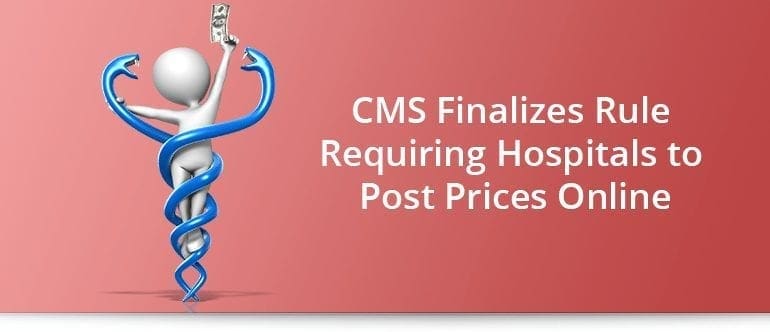Call us toll-free: 800-878-7828 — Monday - Friday — 8AM - 5PM EST


By Tony Abraham for Healthcare Dive
Dive Brief:
- CMS on Thursday issued its final rule on the Inpatient Prospective Payment System, cementing the agency’s April proposal to increase transparency by pushing hospitals to post standard charges online in a machine-readable format. The rule doesn’t require posting any more information than hospitals are already mandated to provide to the public, but CMS has issued a request for information seeking input on furthering pricing transparency.
- The final rule boosts payment rates for general acute care hospitals paid under IPPS by about 1.85%, up from the 1.75% bump proposed in April. Payments for long-term care hospitals have been increased 1.35%, up from the proposed 1.15%. CMS estimates the rate hike will increase Medicare spending on inpatient hospital services by about $4.8 billion in 2019, up from the April estimate of $4 billion.
- On the interoperability front, providers will be required to use 2015 Edition certified EHR products in 2019. The rule also eliminates the 25% threshold policy for long term care hospitals, reduces reporting periods to 90 consecutive days and eliminates 18 reporting measures while “de-duplicating” 25 more.
Dive Insight:
The jump in Medicare’s estimated total spending on inpatient hospital services from $4 billion to $4.8 billion is the result of an increase in new technology add-on payments of $0.2 billion and the projected hospital market basket update, according to CMS. All-in-all, that estimate doubles spending projections made in last year’s final rule.
CMS will also distribute about $1.5 billion more for uncompensated care payments in 2019 than it did in 2018, totaling roughly $8.3 billion. The boost is the result of increases in payments that would have been allocated toward disproportionate share hospitals (DSH). This payment change in part reflects the rising number of uninsured Americans.
CMS will also be starting a full audit process for Worksheet S-10 charity care data this fall in an effort to determine how charity care payments are distributed.
As for pricing transparency, the final rule requires hospitals to “make public a list of their standard charges via the Internet in a machine readable format, and to update this information at least annually.” Patient advocate organizations may find this transparency effort somewhat toothless, as CMS had already required hospitals to make their standard charges public. However, CMS’ supplementary RFI acknowledges swathes of opacity in pricing that need to be addressed.
April’s proposed rule was mostly met with applause from industry associations like the American Hospital Association that had been pushing for reduced reporting periods, the elimination of reporting measures and eliminating the 25% threshold policy for LTCHs. The final rule, which includes all the above, was in turn welcomed by AHA. Tom Nickels, executive vice president for the association, praised most policies included in the final rule in a statement.
“There are a number of policies CMS finalized today that will reduce regulatory burden and help ensure America’s hospitals and health systems can continue to provide high-quality, efficient care for the patients and communities they serve,” Nickels said, noting the association is still studying the rule.
Looking toward the future, CMS Administrator Seema Verma told reporters on a call Thursday evening that the agency is concerned with differentials in the wage index floor that show geographic disparities in payments that favor urban over rural hospitals. This final rule preemptively allows the imputed wage index floor to expire for all-urban states. Nickels said AHA will be analyzing policy changes affecting the area wage index to “determine their ultimate impact.”
